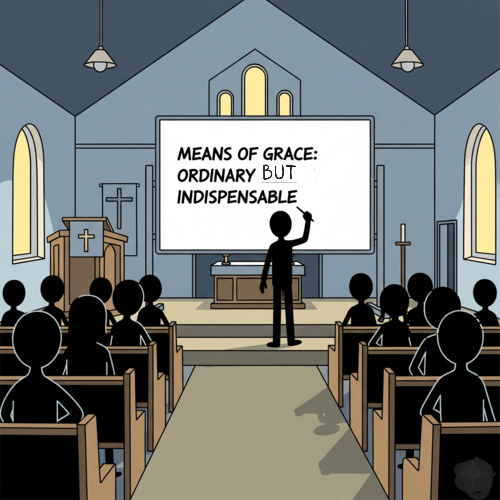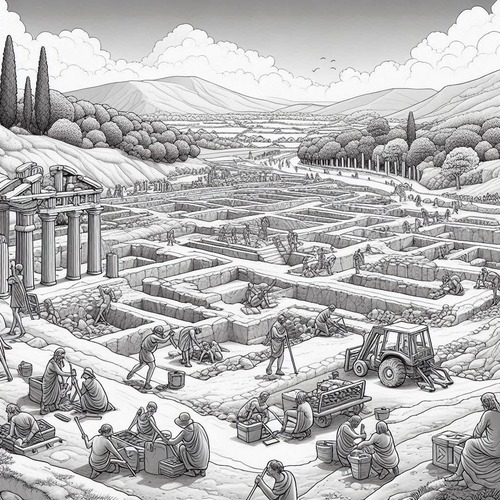Biblical Textual Criticism: Unveiling the Reliability of Scripture
Textual criticism is the scholarly discipline that examines and evaluates the manuscripts of ancient texts to determine their original form. Biblical textual criticism plays a crucial role in affirming the reliability and authenticity of Scripture. This post explains how the Bible has been preserved and transmitted over time, addresses prominent sceptic charges, and provides what we reckon are compelling rebuttals. We shall also compare the Bible's textual integrity with other writings from the same period.
The Basics of Biblical Textual Criticism
Textual criticism involves the meticulous examination of ancient manuscripts to reconstruct the original text as accurately as possible. Scholars analyse various manuscripts, comparing differences and assessing their origins to establish the most reliable text. This process is essential for all ancient documents, including the Bible, which has been preserved through thousands of manuscripts over centuries.
The Preservation and Transmission of the Bible
- Old Testament
The Old Testament, or Hebrew Bible, has been preserved primarily through the detail-oriented work of Jewish scribes, such as the Masoretes, who copied texts with extreme precision. Key manuscript sources include:
- The Masoretic Text: The authoritative Hebrew text of the Jewish Bible, standardized by the Masoretes between the 7th and 10th centuries AD.
- The Dead Sea Scrolls: Discovered in the mid-20th century, these scrolls date from the 3rd century BC to the 1st century AD and include some of the oldest known copies of Old Testament books. They show remarkable consistency with the Masoretic Text.
- The Septuagint: A Greek translation of the Hebrew Bible completed in the 3rd and 2nd centuries BC, used by early Christians and offering insights into early textual variants.
- New Testament
The New Testament boasts an unparalleled wealth of manuscript evidence, with over 5,800 Greek manuscripts, 10,000 Latin manuscripts, and thousands of others in various languages. Key sources include:
- Papyri: Early fragments of New Testament texts dating from the 2nd to the 4th centuries AD, such as the John Rylands Papyrus (P52) and the Bodmer Papyri.
- Uncial Manuscripts: Large, all-capital-letter Greek manuscripts from the 4th to the 10th centuries AD, including the Codex Vaticanus and Codex Sinaiticus.
- Minuscule Manuscripts: Later Greek manuscripts written in a cursive script from the 9th century onward, providing extensive textual data.
- Lectionaries: Collections of Scripture readings used in Christian worship, offering additional textual witnesses.
Addressing Prominent Sceptic Charges
- Charge 1: Changed Beyond Recognition: Some claim the Bible has been altered so extensively over time its original message is lost.
The Rebuttal:
Manuscript Evidence: The sheer volume of manuscripts allows scholars to cross-check and verify the text with a high degree of accuracy. Differences among manuscripts are typically minor, such as spelling variations or word order, and do not affect core doctrines.
Early Attestation: Early manuscripts, such as the Dead Sea Scrolls and early New Testament papyri, demonstrate the biblical text has been remarkably stable over centuries.
Scholarly Consensus: Renowned textual critics acknowledge that no essential Christian beliefs are jeopardized by textual variants.
- Charge 2: Too Many Variants to Trust: Some sceptics say the New Testament contains hundreds of thousands of textual variants, casting doubt on its reliability.
The Rebuttal:
Nature of Variants: The majority of textual variants are trivial, such as spelling differences or synonymous word choices. Only a small fraction affects the meaning, and none alter core theological concepts. Sceptics often overlook similar blemishes in other ancient writings like Homer's Iliad or Plato's works.
Comparison with Other Works: Compared to other ancient texts, the New Testament has far more manuscripts and earlier copies. Works like Homer's "Iliad" have fewer manuscripts and larger time gaps between originals and copies, yet are considered reliable by sceptics.
Scholarly Tools: Advanced methods and the vast manuscript base allow scholars to identify and correct errors, ensuring a highly reliable text.
Comparing the Bible with Other Ancient Writings
Unlike other ancient writings, the Bible stands out for its textual integrity and abundance of manuscript evidence:
- Homer's "Iliad": With around 1,800 manuscripts and a 500-year gap between the original and the earliest copies, the "Iliad" is well-attested for an ancient work but still less so than the New Testament.
- Julius Caesar's "Gallic Wars": There are about 10 surviving manuscripts with a gap of nearly 1,000 years from the original, yet historians generally trust its content.
- Plato's Works: Plato's writings survive in about 250 manuscripts with a similar time gap, still considered reliable.
The Bible's manuscript evidence, especially for the New Testament, is unparalleled. The proximity of many manuscripts to the original writings enhances confidence in their accuracy.
Biblical Textual Criticism: The Verdict
Biblical textual criticism demonstrates Scripture has been preserved and transmitted with remarkable fidelity. Despite the vast number of textual variants, the essence of the biblical message remains intact. The wealth of manuscript evidence and early attestations further solidify the Bible's reliability, surpassing other ancient writings in textual integrity.
The discipline of biblical textual criticism not only refutes sceptic charges but also affirms the robust preservation of the Scriptures. This assurance allows believers to trust in the Bible's message and its impact on their faith.
Related Reads:
- Papyri and Dead Sea Scrolls: Archaeology Endorses Scripture
- Historical Reliability of the Bible: Astonishing Archaeological Finds
- Canonicity: The Journey to the Bible We Know Today
- Unearthing the Past: Excavation Findings that Validate Bible Narratives
- Connecting the Dots: How Undesigned Coincidences Confirm Bible Reliability
Editor's Pick

Should We Stop Using Male Pronouns for God? Why Do We Say No?
A friend of ours arrived eagerly at his first theology class in seminary. But he quickly discovered something troubling: the [...]

Did Old Testament Law Force Women to Marry their Rapists?
**Editor’s Note: This post is part of our series, ‘Satan’s Lies: Common Deceptions in the Church Today’… Viral misinformation abounds [...]

From Danvers To Nashville: Two Statements, One Biblical Vision
30 years separate the Danvers Statement on Biblical Manhood and Womanhood (1987) and the Nashville Statement on Human Sexuality (2017). [...]

The Nashville Statement: Why Affirm It Despite Media Backlash?
WHY DO REFORMED CHRISTIANS STAND BY THIS STATEMENT ON MARRIAGE AND GENDER? When the Nashville Statement was released in 2017, [...]

Who Is Belial? Solving The 2 Corinthians 6:15 Mystery
Belial: This name from the pages of Scripture chills the soul. Who is this mysterious figure Paul invokes in 2 [...]

Celibacy Or Castration: What Jesus Really Means in Matthew 19:12
One of Scripture's most shocking misinterpretations led theologian Origen to castrate himself in the third century. His tragic mistake? Taking [...]

Philippians 4:13: Did Paul Really Mean We Can Do ALL Things?
"I can do all things through Christ who strengthens me." It's on gym walls, graduation cards, and motivational posters everywhere. [...]

The Ordinary Means of Grace: Why Are They Indispensable?
ORDINARY MEANS FOR EXTRAORDINARY TRANSFORMATION What if God's most powerful work in believers' lives happens through the most ordinary activities? [...]

Is the Bible God’s Word? Or Does It Only Contain God’s Word?
The authority of Scripture stands at the crossroads of modern Christianity. While some argue the Bible merely contains God’s Word [...]

Will We Remember This Life in Heaven? What Isaiah 65:17 Means
"Will I remember my spouse in heaven? My children? Will the joy we shared on earth matter in eternity?" These [...]
SUPPORT US:
Feel the Holy Spirit's gentle nudge to partner with us?
Donate Online:
Account Name: TRUTHS TO DIE FOR FOUNDATION
Account Number: 10243565459
Bank IFSC: IDFB0043391
Bank Name: IDFC FIRST BANK






